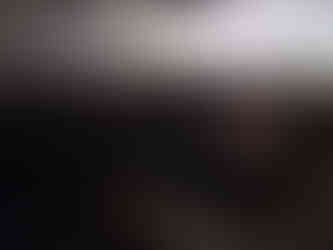The Search for the Earliest Galaxies in the Universe with JWST, by Dr Emma Curtis-Lake
- Paul May
- Oct 16, 2023
- 3 min read
A celestial smorgasbord
Mike Meynell started the meeting with highlights of the night sky over the next few weeks including: a partial lunar eclipse; Jupiter in opposition with Io and Europa transitions - shadow leading pre-opposition and trailing post-opposition; planetary nebulae including the Ring Nebula M57 (small fov and high brightness so good for direct telescope viewing) and the Dumbbell Nebula M27 (large fov and lower brightness so a good astrophotography target); Caroline's Rose cluster; and probably the trickiest target, the Triangulum galaxy M33. A lot of homework for the observational astronomers among us!

Keeping everything crossed
Dr Emma Curtis-Lake presented the main lecture 'The search for the earliest galaxies in the Universe with JWST'. She started her talk by describing the tension at the launch on Christmas Day just under 2 years ago, and at the subsequent unfurling of the mirror once the telescope had reached its Lagrangian orbit. Everything worked perfectly, even though one of the sensors suggested that a panel hadn't opened which would have effectively terminated the mission. JWST's special orbit, about a million miles from earth, ensures it is always facing away from the sun with the back of the mirror protecting all the equipment from the suns radiation, keeping them at a chilly 40K. Even better news was that a fraction of the expected amount of propellant was used to place the JWST into its orbit which potentially extends the telescope's life from 5 to 25 years. That's assuming that it doesn't get hit by more than 10 micrometeors in the meantime. One has already caused minor damage to a mirror - it's a tough environment out there!

Is anyone out there
Emma described the four main missions of the JWST. The first was observation of planets from other solar systems. By blocking light from its sun, direct observations of exoplanets are possible, though not generally in the habitable zones associated with closer orbits. However, the JWST can observe these Goldilock planets by observing the spectra of light that has passed through a planet's atmosphere during a transit. Amazing to think how sensitive the instrumentation must be, to be able to detect carbon based compounds such as methane from planets that are tens of light years away.
A star is born
The second objective of the telescope is to look at the lifecycle of stars. Unlike the Hubble telescope which imaged visible light, the JWST is designed to detect a wide range of infrared wavelengths. This allows imaging through the dust clouds that are a characteristic of stellar nurseries. We saw spectacular images of young stars whose radiation created enormous bubbles within the dustclouds as well as protoplanetary discs around newly formed stars.

Turning back the clocks
As Edwin Hubble demonstrated a century ago, the universe is expanding. This is observed as a redshift in expected spectral lines from starlight. The JWST with it's broad infrared detection capability can see back to the early stages of the universe. The light we receive set off up to 13.5 billion years ago and has been significantly redshifted in the meantime due to the expansion. The amount of this redshift allows us to date the galaxies. By comparing the form and elemental composition of galaxies from different periods we can learn about galaxy evolution. With only a year's worth of data from the telescope, this is very much work in progress
STOP PRESS - the universe isn't broken... yet!
The final dimension of the JWST's mission is the analysis of First Light. This is Emma's specific area of study. We can go back further in time, closer to the Big Bang, than the Hubble telescope. In fact the record for the earliest galaxy has already been broken at around 400M years. There was an initial result indicating an even earlier galaxy at 230M years after the Big Bang which would have challenged our current understanding of the universe. Further study and analysis, however, shifted this timeline to a point consistent with theory. A shame perhaps! This is not to suggest that the JWST hasn't thrown up some surprising and unexplained results. On the contrary, the spectral analysis reveals heavier elements in galaxies much earlier than expected from standard stellar evolution theory. The analysis also shows significant spectral line broadening which are an indicator of gas clouds moving at over 2km/s. This would only be possible in the vicinity of a black hole showing that massive black holes had already developed in the early universe.

We were all very much infected by Emma's enthusiasm for the JWST. Hard not to be when you think of how much the JWST team has achieved in just the first year of data collection. Roll on the next 24.






























Comments